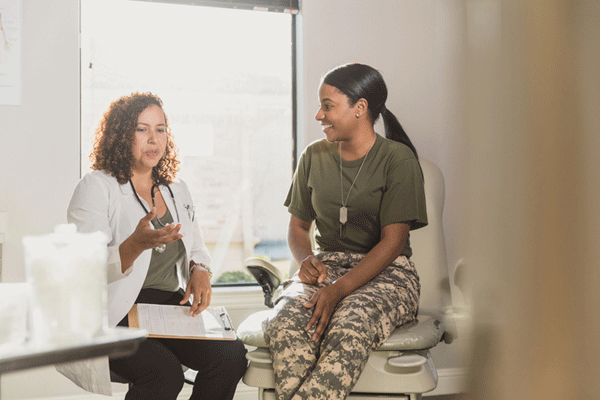Chlamydia is the most common sexually transmitted infection (STI) in the military
Chlamydia is 3x more common in servicewomen and service members with female biology than in male service members.
233,886 chlamydia infections were reported among all active-duty service members from 2013 to2021.
Chlamydia cases increased by 64% among all active-duty service members from 2013 to 2019.
To prevent infection, it’s important to know the symptoms and understand the risks.
How to identify chlamydia
People often don’t know they have chlamydia because it frequently has no symptoms. When symptoms are present, they may include:
- Vaginal discharge
- Pain during sex
- Bleeding between periods and after sex
- Frequent and/or painful urination
- Rectal pain, discharge or bleeding
Tips to prevent chlamydia
- Use male latex condoms or female polyurethane condoms during sexual contact
- Get regular screenings for STIs
- Speak openly with a medical provider about your sexual history
- Limit your number of sex partners
- Avoid douching, which can kill good bacteria in the vagina and increase the risk of infection
What to do if you’ve been diagnosed with chlamydia
- Take antibiotics
- Avoid having sex during treatment
- Get re-tested 3 months after an initial infection
Possible complications of chlamydia
- Pelvic inflammatory disease, an infection of the uterus and fallopian tubes
- Passing the infection to a newborn during childbirth
- Ectopic pregnancy, when a fertilized egg grows outside of the uterus
- Infertility
- Reactive arthritis, a condition affecting the joints, eyes and urethra
















